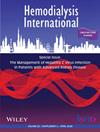Analysis of Sleep Quality Categories and Associated Factors in Patients on Hemodialysis
Abstract
Introduction
Latent profile analysis is a statistical method for identifying potential groups or profiles and categorizing individuals accordingly. In psychology and social sciences, it is frequently employed to explore the latent group structure in data, aiding researchers in comprehending disparities and similarities among different groups. This study utilized latent profile analysis to explore the potential categories of sleep quality in patients on hemodialysis and analyze the factors associated with each category.
Methods
Convenience sampling was used to select 268 patients who received maintenance hemodialysis treatment at China-Japan Friendship Hospital from July 2023 to June 2024. This study was a cross-sectional survey, and data were collected using a general information survey, the Pittsburgh Sleep Quality Index, Frailty Screening Scale, and Fatigue Scale-14. Different sleep types were identified in patients on hemodialysis using latent profile analysis, and the factors affecting sleep quality in each type were analyzed.
Findings
The study included 154 males and 114 females, with a mean age of 61.07 ± 13.72 years and a median dialysis duration of 4.00 (2.00, 9.00) years. Latent profile analysis identified four sleep quality categories among patients on hemodialysis: good sleep quality (35.30%), insufficient sleep time with high medication use (13.80%), good sleep time with high medication use (4.50%), and insufficient sleep time with low medication use (46.40%). Sex, age, employment status, ultrafiltration volume, frailty screening scale, and fatigue rate-14 were compared among the different categories, revealing significant differences (p < 0.05).
Discussion
Latent profile analysis identified four sleep quality categories among patients undergoing hemodialysis, with factors, such as age, dialysis duration, and the presence of frailty influencing sleep quality differently. Future efforts should focus on this population by providing targeted health counseling and psychological support tailored to the characteristics of each sleep category to address their sleep issues and improve their quality of life.

 求助内容:
求助内容: 应助结果提醒方式:
应助结果提醒方式:


